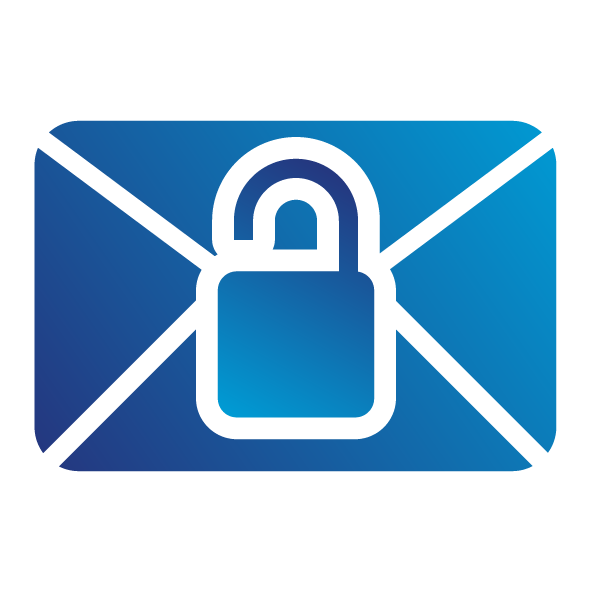A08:2021 – ソフトウェアとデータの整合性の不具合 
因子
| 対応する CWE 数 | 最大発生率 | 平均発生率 | 加重平均(攻撃の難易度) | 加重平均(攻撃による影響) | 最大網羅率 | 平均網羅率 | 総発生数 | CVE 合計件数 |
|---|---|---|---|---|---|---|---|---|
| 10 | 16.67% | 2.05% | 6.94 | 7.94 | 75.04% | 45.35% | 47,972 | 1,152 |
概要
これは2021年に新設されたカテゴリーで、ソフトウェアの更新、重要なデータを、CI/CDパイプラインにおいて整合性を検証せずに見込みで進めることによる問題にフォーカスしています。 共通脆弱性識別子/共通脆弱性評価システム (CVE/CVSS) のデータから最も重大な影響を受けたものの1つです。 注目すべき共通脆弱性タイプ一覧 (CWE) は、CWE-829: 信頼できない制御領域からの機能の組み込み、CWE-494: ダウンロードしたコードの完全性検証不備、そしてCWE-502: 信頼できないデータのデシリアライゼーションです。
説明
ソフトウェアとデータの整合性の不具合は、コードやインフラストラクチャが整合性違反から保護されていないことに関連しています。 例として、アプリケーションが信頼されていないソースに由来するプラグインやライブラリ、モジュール、コンテンツデリバリーネットワーク (CDNs) に依存している場合が挙げられます。 安全でないCI/CDパイプラインも、権限のないアクセスや悪意のあるコード、システムののっとりの可能性を高めます。 今では多くのアプリケーションが自動更新の機能を備えていますが、そこで、十分な整合性の検証を行うことなくアップデートがダウンロードされ、信頼済みアプリケーションに対して適用されています。 攻撃者は自前のアップデートをアップロードし、全てのインストール対象に対して配信を行う可能性があります。 他の例として、オブジェクトやデータが攻撃者が目で見て修正することが可能な構造としてエンコードまたはシリアライズされるような場合は、安全でないデシリアライゼーションに対して脆弱であると言えます。
防止方法
-
署名あるいは類似のメカニズムを用いて、ソフトウェアやデータが意図されたソースから取得されたものであることを検証します。
-
npmやMavenなど、ライブラリや依存関係が信頼されたリポジトリを使用していることを確認します。
-
コンポーネントが既知の脆弱性を含まないことを検証するために、OWASP Dependency CheckやOWASP CycloneDXといったソフトウェアサプライチェーンセキュリティツールが使用されていることを確認します。
-
悪意のあるコードや設定がソフトウェアパイプラインに組み込まれる機会を最小化するために、コードや設定の変更に対するレビュープロセスが確立されていることを確認します。
-
CI/CDパイプラインが適切に分離され、設定され、アクセス制御が行われていること、また、ビルドやデプロイのプロセスに至るコードフローの整合性が確保されていることを確認します。
-
シリアライズされたデータの改ざんや再生成を検出する何らかの整合性確認やデジタル署名を行うことなしに、信頼されていないクライアントに対して未署名もしくは暗号化されていないシリアライズされたデータを送信しません。
攻撃シナリオの例
シナリオ #1 署名のないアップデート: 多くのホームルーター、セットトップボックス、デバイスファームウェア等は、署名済みファームウェアによるアップデートの検証を行いません。 未署名のファームウェアは、攻撃者にとって拡大しつつある標的であり、悪化の一途が予想されます。 多くの場合においてこの問題を解決するためには、将来のバージョンにて修正を行った上で以前のバージョンが使用されなくなるのを待つほかないことから、これは非常に大きな懸念事項です。
シナリオ #2 SolarWindsでの悪意のあるアップデート: 最近の注目すべき攻撃がSolarWinds Orionでの攻撃であるということと併せて、国家はアップデートの機構を攻撃することが知られています。 そのソフトウェアを開発した企業は、安全なビルドとアップデートの整合プロセスを備えていました。 しかし、それらは破壊することが可能であったために、その企業は、数ヶ月にわたって、高度に標的化された悪意のあるアップデートを18,000を超える組織に配信し、そのうち100ほどの組織が影響を受けました。 この一件は、この類の侵害としては、歴史上最も広範囲に影響が広がり、また最も重大であったものの一つです。
シナリオ #3 安全でないデシリアライゼーション: Reactアプリケーションが、一連のSpring Bootマイクロサービスを呼び出します。 関数型言語のプログラマーは、イミュータブルなコードを書こうとします。 そこで、プログラマーは、呼び出しの前後でシリアライズしたユーザーの状態を渡す、と言う解決策を思いつきます。 攻撃者は (base64でエンコードされていることを示す) "rO0" というJavaオブジェクトのシグネチャに気づき、Java Serial Killerツールを使用してアプリケーションサーバ上でリモートコードを実行します。
参考資料
-
[OWASP Cheat Sheet: Software Supply Chain Security](Coming Soon)
-
[OWASP Cheat Sheet: Secure build and deployment](Coming Soon)
-
A 'Worst Nightmare' Cyberattack: The Untold Story Of The SolarWinds Hack
対応する CWE のリスト
CWE-345 Insufficient Verification of Data Authenticity
CWE-353 Missing Support for Integrity Check
CWE-494 Download of Code Without Integrity Check
CWE-502 Deserialization of Untrusted Data
CWE-565 Reliance on Cookies without Validation and Integrity Checking
CWE-784 Reliance on Cookies without Validation and Integrity Checking in a Security Decision
CWE-829 Inclusion of Functionality from Untrusted Control Sphere
CWE-830 Inclusion of Web Functionality from an Untrusted Source
CWE-915 Improperly Controlled Modification of Dynamically-Determined Object Attributes
A08:2021 – Software and Data Integrity Failures 
Factors
| CWEs Mapped | Max Incidence Rate | Avg Incidence Rate | Avg Weighted Exploit | Avg Weighted Impact | Max Coverage | Avg Coverage | Total Occurrences | Total CVEs |
|---|---|---|---|---|---|---|---|---|
| 10 | 16.67% | 2.05% | 6.94 | 7.94 | 75.04% | 45.35% | 47,972 | 1,152 |
Overview
A new category for 2021 focuses on making assumptions related to software updates, critical data, and CI/CD pipelines without verifying integrity. One of the highest weighted impacts from Common Vulnerability and Exposures/Common Vulnerability Scoring System (CVE/CVSS) data. Notable Common Weakness Enumerations (CWEs) include CWE-829: Inclusion of Functionality from Untrusted Control Sphere, CWE-494: Download of Code Without Integrity Check, and CWE-502: Deserialization of Untrusted Data.
Description
Software and data integrity failures relate to code and infrastructure that does not protect against integrity violations. An example of this is where an application relies upon plugins, libraries, or modules from untrusted sources, repositories, and content delivery networks (CDNs). An insecure CI/CD pipeline can introduce the potential for unauthorized access, malicious code, or system compromise. Lastly, many applications now include auto-update functionality, where updates are downloaded without sufficient integrity verification and applied to the previously trusted application. Attackers could potentially upload their own updates to be distributed and run on all installations. Another example is where objects or data are encoded or serialized into a structure that an attacker can see and modify is vulnerable to insecure deserialization.
How to Prevent
-
Use digital signatures or similar mechanisms to verify the software or data is from the expected source and has not been altered.
-
Ensure libraries and dependencies, such as npm or Maven, are consuming trusted repositories. If you have a higher risk profile, consider hosting an internal known-good repository that's vetted.
-
Ensure that a software supply chain security tool, such as OWASP Dependency Check or OWASP CycloneDX, is used to verify that components do not contain known vulnerabilities
-
Ensure that there is a review process for code and configuration changes to minimize the chance that malicious code or configuration could be introduced into your software pipeline.
-
Ensure that your CI/CD pipeline has proper segregation, configuration, and access control to ensure the integrity of the code flowing through the build and deploy processes.
-
Ensure that unsigned or unencrypted serialized data is not sent to untrusted clients without some form of integrity check or digital signature to detect tampering or replay of the serialized data
Example Attack Scenarios
Scenario #1 Update without signing: Many home routers, set-top boxes, device firmware, and others do not verify updates via signed firmware. Unsigned firmware is a growing target for attackers and is expected to only get worse. This is a major concern as many times there is no mechanism to remediate other than to fix in a future version and wait for previous versions to age out.
Scenario #2 SolarWinds malicious update: Nation-states have been known to attack update mechanisms, with a recent notable attack being the SolarWinds Orion attack. The company that develops the software had secure build and update integrity processes. Still, these were able to be subverted, and for several months, the firm distributed a highly targeted malicious update to more than 18,000 organizations, of which around 100 or so were affected. This is one of the most far-reaching and most significant breaches of this nature in history.
Scenario #3 Insecure Deserialization: A React application calls a set of Spring Boot microservices. Being functional programmers, they tried to ensure that their code is immutable. The solution they came up with is serializing the user state and passing it back and forth with each request. An attacker notices the "rO0" Java object signature (in base64) and uses the Java Serial Killer tool to gain remote code execution on the application server.
References
-
[OWASP Cheat Sheet: Software Supply Chain Security](Coming Soon)
-
[OWASP Cheat Sheet: Secure build and deployment](Coming Soon)
-
A 'Worst Nightmare' Cyberattack: The Untold Story Of The SolarWinds Hack
List of Mapped CWEs
CWE-345 Insufficient Verification of Data Authenticity
CWE-353 Missing Support for Integrity Check
CWE-494 Download of Code Without Integrity Check
CWE-502 Deserialization of Untrusted Data
CWE-565 Reliance on Cookies without Validation and Integrity Checking
CWE-784 Reliance on Cookies without Validation and Integrity Checking in a Security Decision
CWE-829 Inclusion of Functionality from Untrusted Control Sphere
CWE-830 Inclusion of Web Functionality from an Untrusted Source
CWE-915 Improperly Controlled Modification of Dynamically-Determined Object Attributes